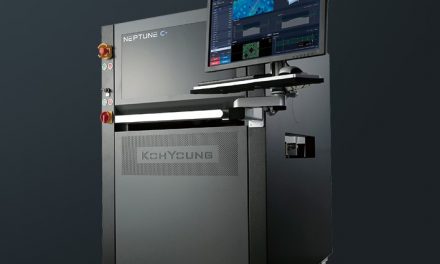Onshoring Chip Production: Short-Term Challenges, Long-Term Potential
By Frank Cavallero, CEO A2 Global

One proposed solution: onshoring to both increase chip accessibility and increase US market share of total semiconductor fab output. This idea has been largely moved forward by the Creating Helpful Incentives to Produce Semiconductors (CHIPS) for America Act, but is this just a pipe dream of an ideal we’ll never be able to realize?
To put it mildly, the semiconductor industry is tremendously complex, and the idea of onshoring to alleviate the shortage we’re facing today is not a viable immediate solution. Long-term, if onshoring is to gain momentum, there are certainly long-term benefits that some industries will see, but others will still be left struggling and will have to find alternative solutions.
Who Makes Up the Semiconductor Industry?
To understand how (or if) onshoring will make any noticeable impact on the US semiconductor industry, we must understand the business types of which its comprised. Businesses in this space can take several forms:
- Chip designers
- Integrated circuit fabricators
- Chip packagers
- Semiconductor Manufacturing Equipment (SME) producers
- Electronic Design Automation (EDA) software producers
- Core intellectual property sellers/licensers
From the start, the blanket idea of onshoring, especially as it is (loosely) laid out by the CHIPS Act, is not feasible given the widespread landscape of the industry. Onshoring semiconductor development and manufacturing can touch some, but not all, of these business types.
Where Does the US Need the Most Help?
Despite suggestions that the US is dramatically behind in domestic chip production, of the business types laid out above, the US is only truly lacking in chip fabrication – in theory, this is where onshoring investments should be made. Unfortunately, chip fabrication is a costly and time- and resource-intensive process. For the shortage we’re facing now, this will not make an impact.
Long-term, onshoring fabrication has fantastic potential to improve the US’ standing globally in the semiconductor industry and fuel the development of the latest and greatest technologies. Right now, a substantial portion of the US’ chip fabrication is handled by foreign foundries, with Intel and Texas Instruments being notable exceptions who fabricate their chips domestically. Even before the CHIPS Act came about, tremendous amounts of private sector money was being spent on R&D to move the US forward in fab production and the technological prowess needed to do so effectively. In short, the idea to onshore fabrication has been on the minds of US companies, but it was not seen as urgent until the shortage we’re facing today.
Legacy Technology Challenges: Who Wins, Who Loses?
To onshore fabrication requires tremendous and consistent investment from the private and public sector, and such investment demands a profitable return. Bloomberg’s Anjani Trivedi cites a figure of $20 billion to build a large plant and equip it with leading-edge tech — “more than a new aircraft carrier or nuclear power plant.” Additionally, they take years to build and ramp up: anywhere from 2–3.5 years to reach full capacity. With so much time and energy being spent to develop domestic fabs, they will inevitably be used to develop chips that are ”next generation” tech — things like the 5 nanometer lithography process — used in commonly purchased goods (think smart phones and EVs), and generally have shorter lifecycles than “last generation” legacy chips.
This way of thinking, while great for business, spells disaster for systems that rely on legacy chips. Industries like military and defense are perfect examples – they do not have the time or resources to regularly update their systems, and from a cost perspective, they want to extend the lifecycle of their chips while more commercial end products seek to reduce lifecycles. In fact, legacy chips are a key driver of the shortage we’re facing today – even Apple stated that issues with producing iPhones amid the shortage were the small amounts of legacy chips that are present in the phones but are not even the power-driver of its performance. The difference is that Apple will invest the time and money needed to phase out the legacy chips it still uses, while military and defense, in most instances, cannot.
To remain viable, companies in these sectors have no choice other than continue to offshore: either making low-profit chips themselves or contracting manufacturers who will do it for them.
The Verdict?
Onshoring semiconductor production undoubtedly has its positives long-term. It is in the US’ interest to invest in fabrication, if for nothing else to avoid a shortage like this in the future. Best case scenario, it moves the US into a lead market position. It’s important to note a lack of short-term relief, though. The sheer investment required to open a single fab, and the time it takes to make one operational, render immediate improvement impossible even with the billions allocated by the CHIPS Act.
Even in the long-term, certain industries will benefit more than others. Driven by profit margins, manufacturers will prioritize modern chips that demand higher prices. Here, the negatives are twofold. Firstly, components nearing obsolescence will become even more difficult to source, derailing manufacturing schedules and hampering industries like defense and aerospace, who rely heavily on legacy components, and their ability to deliver for clients. And secondly: As high-tech semiconductors find their way into more mainstream products, their production costs will climb — and companies will have no choice but to pass those increases on to end-users.
If onshoring fabrication becomes the new normal, establishing procurement plans and obsolescence management strategies will be critical for companies who cannot benefit from domestic production. Offshoring can never be completely phased out as legacy systems remain in use, so companies must always have a backup plan.
Frank Cavallaro is the CEO of A2 Global, a semiconductor sourcing company managing and analyzing supply chain disruptions, and he has worked in this space for nearly 30 years.













